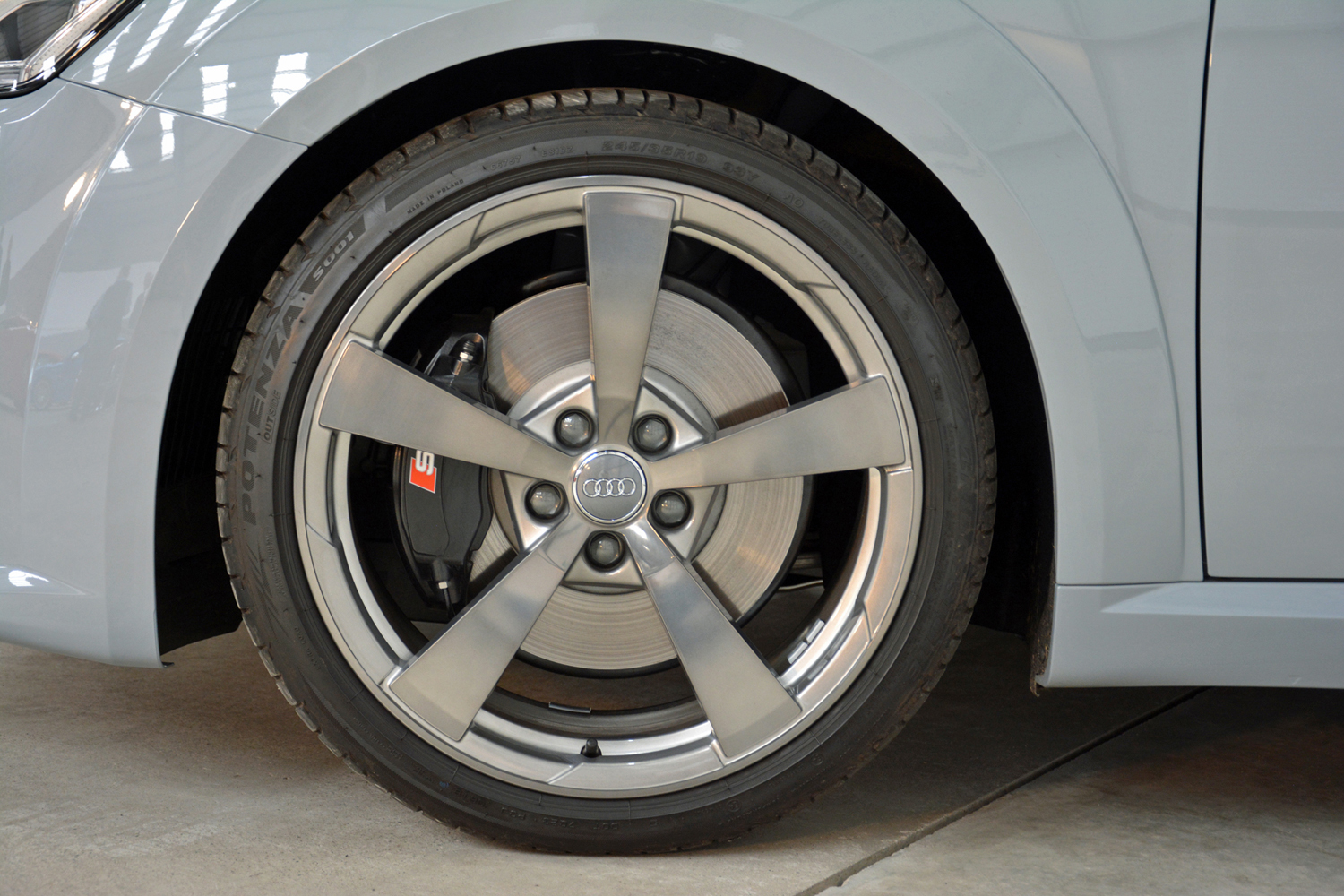The Audi TT turns 20 this year. The brand is celebrating the occasion by updating both the coupe and roadster models with discreet visual tweaks, more standard technology and luxury features, plus an important mechanical upgrade you feel but don’t see unless you dive into the engine bay with a set of wrenches.
Style is a major part of the TT story so designers left the exterior largely intact; it needs to remain recognizable as a TT. Enthusiasts with a well-trained eye will nonetheless tell the European-spec model receives a revised grille, more muscular-looking bumper inserts up front, and imitation air vents integrated into the rear quarter panels. Digital Trends learned the 2019 TT sold in the United States won’t receive the updated grille you see in our exclusive photos for regulatory reasons, so the visual updates made to the American-spec model will ultimately be fairly minor.
Three new paint colors (called cosmos blue, pulse orange, and turbo blue, respectively) and additional alloy wheel designs round out the list of exterior changes. For an extra cost, TT buyers can add an appearance package that bundles LED headlights, red brake calipers visible through gloss black 20-inch alloy wheels, and a fixed wing out back. The cabin receives body-colored contrast stitching and a 12-o’clock mark on the steering wheel.
Style is a major part of the TT story.
Audi made its drive select technology standard on the TT. It gives the driver several driving modes including comfort, individual, auto, and dynamic to choose from using a switch located on the center console. The company also added illuminated USB ports to keep mobile devices topped up, light and rain sensors for the lights and the wipers, and heated door mirrors. The TT is still one of the rare new cars without a central touchscreen, a decision made to keep the dashboard as pure and driver-focused as possible. Instead, the virtual cockpit behind the steering wheel displays the infotainment system along with key data about the car and its surroundings. Also found in other Audi models, like the A6, the A7, and the Q8, it’s a thin-film transistor (TFT) screen the driver can configure using buttons on the multi-function steering wheel or on the center console.
The TT carries on with a turbocharged, 2.0-liter four-cylinder engine tuned to produce 228 horsepower (eight ponies more than last year’s model) and 258 pound-feet of torque. The TTS uses an evolution of the turbo four that produces 292 hp and 280 pound-feet of twist. Both engines are available with Quattro all-wheel drive and a new-for-2019 seven-speed dual-clutch automatic transmission. That is one more gear than last year. While that may not sound like it makes a major difference, TT project manager Andreas Gifhorn told Digital Trends adding a seventh gear allowed engineers to make the first six shorter for improved acceleration. Seventh is used exclusively to keep fuel economy in check when cruising at freeway speeds.
The TT’s birthday bash will conclude with the launch of a limited-edition model appropriately named TT 20 Years. Pictured above, it stands out from the regular-production model with an array of edition-specific visual tweaks that pay homage to the TTS Concept introduced at the 1995 Tokyo auto show to preview the original TT. The list of heritage-laced styling cues includes either arrow gray or nano gray paint, a brown leather interior with Panuka contrast stitching, and stainless steel exhaust pipes.
Audi plans to make 999 versions of the model and Digital Trends learned about 80 of them will head to the United States. Each one will come with a numbered plaque affixed right in front of the gear selector on the center console. The TT 20 Years edition will reach showrooms in time for the 2019 model year but pricing information hasn’t been released yet.
Editors' Recommendations
- Audi’s newest EV packs augmented-reality tech and customizable lights
- Audi’s electric 2022 RS E-Tron GT is a concept that escaped the drawing board
- 2021 Jaguar F-Type sports car gets a new face and more tech
- The 2020 Audi RS Q3 is a souped-up SUV you’ll have to admire from afar
- The Audi AI:Trail Quattro concept is the autonomous off-roading EV of our dreams























